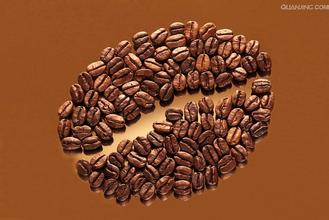Production conditions of Coffee trees Shijiazhuang Cafe
Fertilization is carried out in combination with shaping within 1 - 2 days after planting. Young coffee trees were mainly fertilized with nitrogen fertilizer and appropriate phosphorus and potassium fertilizer to accelerate the formation of crown and promote the development of roots. Human and livestock manure and green leaf compost also have a good effect on the growth of young coffee trees.
The first fertilization can be carried out two months after coffee seedling planting, and then fertilization can be carried out once every 1~2 months. Such as the application of human and animal waste urine, should be decomposed and diluted with water in a ratio of 1:3 after use, each plant applied 10 jin, water and fertilizer had better be applied in the dry season, ammonium sulfate can be added to the compost together, each load of compost can be mixed with ammonium sulfate 3~5 liang. Chemical fertilizer (nitrogen, potassium fertilizer) can also be dug shallow ditch 15 cm outside the crown after rain, 15~25 grams per plant, young coffee fertilizer should grasp the principle of frequent application and thin application.
② Fertilization of coffee trees during fruiting period
Under better management, coffee begins to bear fruit in the third year after planting. According to analysis, coffee fruit development, in addition to nitrogen, but also need more potassium, so the fertilization of mature coffee fruit trees should be mainly nitrogen and potassium, and appropriate with phosphorus and other elements. The effect of applying potassium fertilizer during fruit development was very significant. According to the determination, the effect of potassium fertilizer application on Arabica coffee is the best from July to August; the dry matter growth of medium-sized coffee fruit has three peak periods, namely July to September, October to December and January to February of the next year, so potassium fertilizer can be applied in three times.
1, coffee tree planting conditions
The ideal planting conditions for coffee trees are: temperature between 15~25℃ temperature climate, and the annual rainfall must reach 1500~2000 mm, at the same time its rainfall time, to match the flowering cycle of coffee trees. Of course, in addition to seasonal rainfall, there must be fertile soil and good drainage. Fertile soil containing pozzolanic ash. In addition, although sunlight is an indispensable element for coffee growth and fruit, too strong sunlight will inhibit the growth of coffee trees, so various producing areas usually cooperate with planting some shade trees. The ideal altitude is between 500 and 2000 meters.
It can be seen that the conditions for cultivating high-quality coffee are quite strict: sunlight, rainfall, soil, temperature, and the way coffee beans are harvested and produced will affect the quality of the coffee itself.
White flowers, red fruits
Coffee trees bloom for the first time about three years old, white flowers 5-petalled tubular flowers, wafting a faint jasmine fragrance, inflorescences dense and arranged in clusters. Flowers wither two or three days after flowering and begin to bear fruit a few months later. The fruit is a stone fruit, about 1.5 cm in diameter, initially green, then gradually yellow, mature into red, and cherry is very similar, so called Coffee Cherry (Coffee Cherry), can be harvested at this time.
Coffee fruit contains two seeds, namely coffee beans. The two beans stand upright facing each other on one side of their plane. Each coffee bean has a thin outer membrane, called the silver skin, which is covered with a yellow outer skin, called the endocarp. The whole bean is encased in a viscous pulp, forming a soft, sweet pulp with an outer shell

Important Notice :
前街咖啡 FrontStreet Coffee has moved to new addredd:
FrontStreet Coffee Address: 315,Donghua East Road,GuangZhou
Tel:020 38364473
- Prev

Is there any medicine for coffee beans? how to make a strong coffee?
1. Effect on the central nervous system: caffeine, the main active ingredient of coffee, and its structural analogue theophylline have a strong central excitatory effect on coffee trees. But theophylline has a stronger effect and lasts longer than caffeine. People who take caffeine or drink caffeinated drinks often show that drowsiness disappears, fatigue is reduced, and the mind is quick. With the increase of the dose, the excitatory effect of the central nervous system becomes clearer.
- Next

What are the main types of coffee trees? why should they be raised? How to grow coffee beans
The main types of coffee trees: Robasta bean shape is larger, the front is gradually round, the back is round and convex, the crack is straight. Robasta coffee trees are native to Madagascar in central and western Africa and Indonesia in Asia, and account for about 20% to 30% of the world's output. Robasta coffee tree is suitable for planting in the lowlands below 500 meters above sea level and its adaptability to the environment.
Related
- Does Rose Summer choose Blue, Green or Red? Detailed explanation of Rose Summer Coffee plots and Classification in Panamanian Jade Manor
- What is the difference between the origin, producing area, processing plant, cooperative and manor of coffee beans?
- How fine does the espresso powder fit? how to grind the espresso?
- Sca coffee roasting degree color card coffee roasting degree 8 roasting color values what do you mean?
- The practice of lattes: how to make lattes at home
- Introduction to Indonesian Fine Coffee beans-- Java Coffee producing area of Indonesian Arabica Coffee
- How much will the flavor of light and medium roasted rose summer be expressed? What baking level is rose summer suitable for?
- Introduction to the characteristics of washing, sun-drying or wet-planing coffee commonly used in Mantenin, Indonesia
- Price characteristics of Arabica Coffee Bean Starbucks introduction to Manning Coffee Bean Taste producing area Variety Manor
- What is the authentic Yega flavor? What are the flavor characteristics of the really excellent Yejasuffi coffee beans?

